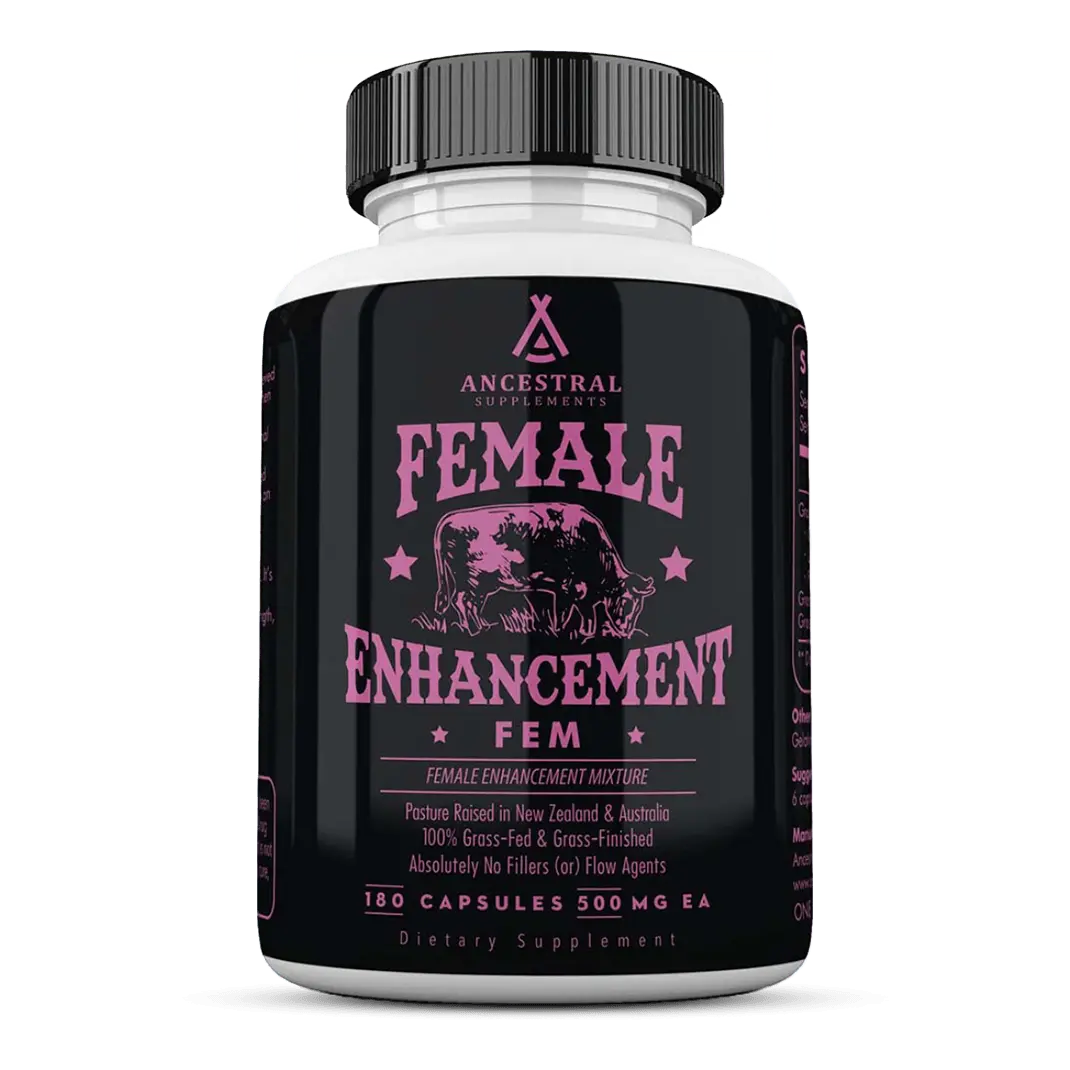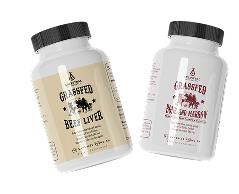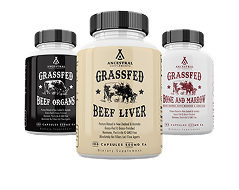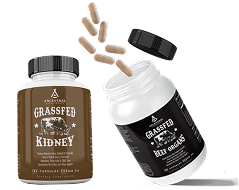Why Your Body Needs to Move: The Science Behind Exercise and Longevity

Picture this: your great-great-great (add about 10,000 more "greats") grandmother chasing down prey across the African savanna, her body perfectly designed for the hunt. Her sparse hair and abundant sweat glands kept her cool during marathon pursuits. Her spring-like Achilles tendons and arched feet propelled her forward mile after mile.
That's your genetic blueprint. You're literally descended from endurance athletes.
But here's the thing—modern life has made us forget this fundamental truth. We've traded persistence hunting for desk jobs, physical challenges for digital convenience. Yet our bodies still crave what they were designed for: movement, strength, and endurance.
The Deadly Truth About Sitting Still
As we age, maintaining muscle mass becomes crucial for not only staying strong but also for longevity. Frailty, marked by weakness, slowness, and fatigue, puts older adults at a significantly higher risk of dying from various causes compared to those who remain physically robust.
-
A 2.4 times greater risk of death from any cause
-
A 2.6 times greater risk of dying from cardiovascular diseases
-
Double the risk of dying from cancer
-
A staggering 4.9 times greater risk of dying from respiratory infections
-
A 2.9 times higher risk of death from dementia
Frailty doesn’t just increase the likelihood of death—it also comes with a higher chance of developing disabilities that make daily activities difficult, being admitted to nursing homes, and experiencing falls, fractures, and hospitalizations.
The leading cause of frailty is sarcopenia, the loss of muscle mass and function with aging. Sarcopenia is closely tied to both premature death and a decreased quality of life. When muscle mass diminishes, so does strength, leaving older adults physically weak and exhausted by tasks that were once easy.
Sarcopenia creates a vicious cycle: losing muscle makes physical activity harder, which in turn leads to even more muscle loss. This gradual weakening isn’t just a threat to your ability to move — it’s a major health risk.
Muscle tissue is far more than just a means of physical movement. It plays a central role in regulating metabolism and protecting against chronic diseases. People with the lowest levels of muscle mass and strength are at the highest risk of dying early. Shockingly, sarcopenia affects more than half of adults over 50, 20-35% of middle-aged adults, and even about 10% of younger adults.
The good news? No matter your age, you can still build and maintain substantial, healthy muscle tissue. The belief that muscle loss is inevitable with age is one of the most harmful myths out there.
Lift Heavy Things (Yes, You!)
The evidence is clear: staying active through resistance training keeps you strong, no matter your age. Lifelong athletes who focus on strength training maintain superior strength compared to those who never trained, and that strength gap only widens with age. Incredibly, a 90-year-old master weightlifter — someone who’s been lifting for decades — can often outlift an average 40-year-old who doesn't train. And when it comes to power, a 70-year-old lifter often has the explosive strength of someone 30 years younger.
So, what’s behind these impressive differences? It all comes down to the type of muscle fibers being built. Resistance training primarily targets type II muscle fibers — those responsible for generating powerful, quick bursts of force. Endurance training, on the other hand, relies mostly on type I fibers, which support low-intensity, longer-duration activities. This is why lifting weights or performing bodyweight exercises builds a different kind of strength and muscle compared to running or cycling.
A recent study underscored this by comparing elderly weightlifters to endurance athletes. It found that older adults who focused on resistance training retained far more type II muscle fibers than their endurance-trained counterparts. In fact, these lifelong weightlifters had muscle fiber profiles similar to strength-trained young adults. Meanwhile, the elderly endurance athletes who hadn’t done much resistance training had the same levels of muscle fiber dysfunction as recreationally active seniors.
The takeaway? Resistance training is essential for everyone, regardless of age or fitness background. Whether it’s lifting free weights, using machines, or doing bodyweight exercises like push-ups and squats, the key is to engage your muscles regularly against resistance.
The idea that strength training is only for the young is simply wrong. A study out of Finland, which analyzed over a decade of resistance training data from men and women aged 19 to 78, found no major differences in muscle or strength gains between age groups. Another study that looked at older adults who followed a resistance training program for several months revealed that everyone improved in at least one area, whether it was muscle size, strength, or overall physical function. In other words, you’re never too old to benefit from resistance training.
So, what kind of results can you expect? A meta-analysis of 49 studies found that older adults who trained two to three times per week gained about 2.5 pounds of muscle over several months. While that might not sound like a lot, it’s important to remember that the typical rate of muscle loss with aging is just half a pound per year — so this gain can make a huge difference in fighting frailty.
Strength improvements are even more striking. Another meta-analysis involving older adults reported strength gains of 24 to 33 percent across various exercises. Depending on the exercise, that translates to lifting anywhere from 22 to 70 more pounds — impressive results by any standard.
These improvements are even more pronounced when resistance training programs are optimized. Studies show that the best results come from training each muscle group twice per week, performing two to three sets per exercise, and aiming for seven to nine reps per set. Consistency and effort are what count most.
Your Bones Are Listening Too
Just like our muscles, our bones need to be regularly challenged to stay strong. This process, known as bone remodeling, is ongoing throughout life. Bone is constantly being broken down and rebuilt in response to physical stress. While daily activities provide some of this stimulus, resistance training takes it to the next level by offering the kind of mechanical strain that truly strengthens bones.
Think of it this way: the strength and size of your muscles reflect how much you've pushed them through exercise. In the same way, the density of your bones shows how much stress and challenge they've been subjected to. Resistance training applies pressure to your bones as muscles pull and compress them during movement, activating bone-building cells called osteoblasts. These cells get to work repairing any microdamage by creating a protein and mineral matrix that hardens into new bone tissue, making your skeleton stronger.
But the relationship between muscle and bone goes both ways. When bones become fragile, they’re more prone to fractures, which limits your ability to stay active and can lead to muscle loss. Conversely, strong, healthy bones provide a solid foundation for your muscles to contract against, supporting better physical performance. Resistance training, therefore, creates a positive feedback loop: as your bones grow stronger, so do your muscles, and vice versa.
That’s why maintaining bone density is just as important as building muscle — it’s all part of the same system. When both are in good shape, they support and reinforce one another, enhancing your overall strength and resilience.
Cardio: Your Longevity Superpower
Your cardiorespiratory fitness level is one of the strongest predictors of how long you’ll live. A massive study from the Cleveland Clinic followed over 122,000 adults for a decade, and the results were striking: the fitter you are, the lower your risk of dying from any cause.
The biggest impact on longevity came from moving from poor fitness levels to just below average. That shift alone was associated with a 50% reduction in the risk of death. Pushing from low fitness to elite levels showed even more dramatic results, cutting the risk by up to 80%.
What’s even more surprising is that improving cardiorespiratory fitness from low to just below average reduces the risk of dying even more than quitting smoking or curing major diseases like heart disease, diabetes, or high blood pressure. And not by a small margin — this improvement roughly doubles the risk reduction you’d get from addressing those health conditions!
Other research backs up these findings, with most studies agreeing that the key to longevity is achieving high cardiorespiratory fitness in early adulthood and working to slow its decline as you age. This is evident when looking at former athletes who trained intensely during their younger years. A study of thousands of adults showed that former endurance and team-sport athletes lived an average of six years longer than their non-athlete peers. Even when adjusting for other factors, these athletes had a 20–30% lower overall risk of death and significantly lower risks of dying from heart disease, cancer, or stroke.
A comprehensive review of 24 studies confirmed similar results: former endurance athletes had a 35% lower risk of dying from any cause and a 37% lower risk of cardiovascular-related death compared to the general population. Athletes from team sports, which also emphasize endurance, showed comparable benefits.
One of the largest studies on this topic, involving over 116,000 adults in the U.S., found that people who engaged in over 600 minutes of moderate exercise per week reduced their risk of death by up to 32% compared to those who didn’t exercise. The benefits of vigorous exercise were similar but plateaued after about 300 minutes per week.
The Smart Way to Train Your Heart
Cardio isn't just "go hard or go home." There are six distinct training zones, each serving a different purpose:
-
Zone 1: Active recovery—gentle movement that aids healing
-
Zone 2: The sweet spot—sustainable intensity where you can hold a conversation while building serious aerobic fitness
-
Zone 3: Moderate intensity—where your body starts mixing aerobic and anaerobic systems
-
Zone 4: Anaerobic threshold—hard effort where talking becomes difficult
-
Zone 5:VO2 max—near-maximum intensity that pushes your cardiovascular system to its limits
-
Zone 6: All-out sprints—maximum power output
Most of your cardio should happen in Zone 2 (steady-state) with strategic intervals in the higher zones. The magic happens when you can sustain effort in Zone 2 for 30–60 minutes while occasionally pushing into those higher-intensity zones through interval training.
Your Action Plan: Start Where You Are
The beautiful truth? You don't need to become an elite athlete to reap massive benefits.
Here's your roadmap:
For Strength:
-
Train each muscle group twice per week
-
Perform 2–3 sets per exercise
-
Aim for 7–9 reps per set
-
Focus on compound movements like squats, deadlifts, and push-ups
For Cardio:
-
Build your base with Zone 2 training (conversational pace)
-
Add 1–2 interval sessions per week in higher zones
-
Start with what you can handle and gradually increase
Remember: The biggest health gains come from moving from sedentary to somewhat active. You don't need to become a marathon runner or powerlifter to dramatically improve your odds of living longer and stronger.
The Bottom Line
Your body is an incredible machine designed for movement, strength, and endurance. Every workout is a conversation with your evolutionary heritage—a reminder that you carry the genes of survivors who thrived through physical challenges.
In our modern world, exercise isn't just about looking good or feeling energetic (though those are nice bonuses). It's about honoring your biological blueprint and giving your body what it needs to serve you well for decades to come.



















